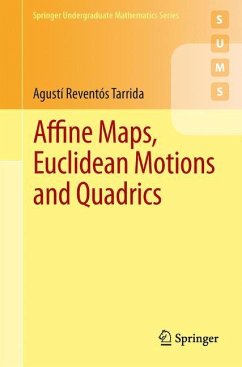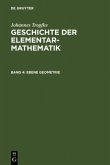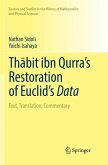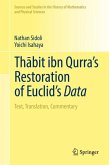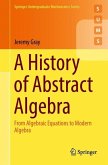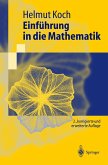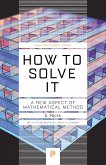Affine geometry and quadrics are fascinating subjects alone, but they are also important applications of linear algebra. They give a first glimpse into the world of algebraic geometry yet they are equally relevant to a wide range of disciplines such as engineering.
This text discusses and classifies affinities and Euclidean motions culminating in classification results for quadrics. A high level of detail and generality is a key feature unmatched by other books available. Such intricacy makes this a particularly accessible teaching resource as it requires no extra time in deconstructing the author's reasoning. The provision of a large number of exercises with hints will help students to develop their problem solving skills and will also be a useful resource for lecturers when setting work for independent study.
Affinities, Euclidean Motions and Quadrics takes rudimentary, and often taken-for-granted, knowledge and presents it in a new, comprehensive form. Standard and non-standard examples are demonstrated throughout and an appendix provides the reader with a summary of advanced linear algebra facts for quick reference to the text. All factors combined, this is a self-contained book ideal for self-study that is not only foundational but unique in its approach.'
This text will be of use to lecturers in linear algebra and its applications to geometry as well as advanced undergraduate and beginning graduate students.
This text discusses and classifies affinities and Euclidean motions culminating in classification results for quadrics. A high level of detail and generality is a key feature unmatched by other books available. Such intricacy makes this a particularly accessible teaching resource as it requires no extra time in deconstructing the author's reasoning. The provision of a large number of exercises with hints will help students to develop their problem solving skills and will also be a useful resource for lecturers when setting work for independent study.
Affinities, Euclidean Motions and Quadrics takes rudimentary, and often taken-for-granted, knowledge and presents it in a new, comprehensive form. Standard and non-standard examples are demonstrated throughout and an appendix provides the reader with a summary of advanced linear algebra facts for quick reference to the text. All factors combined, this is a self-contained book ideal for self-study that is not only foundational but unique in its approach.'
This text will be of use to lecturers in linear algebra and its applications to geometry as well as advanced undergraduate and beginning graduate students.
From the reviews: "This is a textbook on Affine and Euclidean Geometry, with emphasis on classification problems ... . any professor will easily find the way to adapt the text to particular whims, discarding technicalities or lightening some lessons. ... students will find a self-contained book containing all they need to catch the matter: full details and many solved and proposed examples. All in all the text is a highly recommendable choice for a course on Affine Geometry, and fills some gaps in the existing literature." (Jesús M. Ruiz, The European Mathematical Society, February, 2012) "The book arose from courses held by the author and his predecessors at the Autonomous University of Barcelona, hence it is, at the one hand, for the advanced undergraduate and beginning graduate students of mathematics, physics, and engineering and, at the other hand, for lecturers of linear algebra. ... The clearly arranged book offers modern concepts and notation, a high level of generality, many examples solved in detail, and a great number of exercises." (Rolf Riesinger, Zentralblatt MATH, Vol. 1222, 2011) "Anyone who ... is particularly interested in how geometry can be developed using the tools of linear algebra will certainly want to look closely at this book, which gives a linear-algebraic definition of affine and Euclidean geometry ... . Tarrida clearly intends for this book to be used primarily as a text, rather than as a reference. It was obviously written with the needs of students in mind. ... There is also a good supply of worked examples and end-of-chapter exercises." (Mark Hunacek, The Mathematical Association of America, October, 2011)

